Rockford Fosgate Power Elite T4004 Manuale del proprietario
- Categoria
- Altoparlanti
- Tipo
- Manuale del proprietario
Questo manuale è adatto anche per

Installation
& Operation
Installation et fonctionnement
Instalación y funcionamiento
Einbau und Betrieb
Installazione e funzionamento

INTRODUCTION
TABLE OF CONTENTS
2
Dear Customer,
Congratulations on your purchase of the world's finest brand of car audio amplifiers.At Rockford Fosgate we are
fanatics about musical reproduction at its best, and we are pleased you chose our product.Through years of
engineering expertise, hand craftsmanship and critical testing procedures, we have created a wide range of
products that reproduce music with all the clarity and richness you deserve.
For maximum performance we recommend you have your new Rockford Fosgate product installed by an
Authorized Rockford Fosgate Dealer, as we provide specialized training through Rockford Technical Training Institute
(RTTI). Please read your warranty and retain your receipt and original carton for possible future use.
Great product and competent installations are only a piece of the puzzle when it comes to your system. Make sure
that your installer is using 100% authentic installation accessories from Connecting Punch in your installation.
Connecting Punch has everything from RCA cables and speaker wire to Power line and battery connectors. Insist on
it! After all, your new system deserves nothing but the best.
To add the finishing touch to your new Rockford Fosgate image order your Rockford accessories, which include
everything from T-shirts to jackets and hats.
To get a free brochure on Rockford Fosgate products and Rockford accessories,
visit our web site at: www.rockfordfosgate.com
or, in the U.S. call 1-800-669-9899 or FAX 1-800-398-3985.
For all other countries, call +001-480-967-3565 or FAX +001-480-967-8132.
PRACTICE SAFE SOUND™
Continuous exposure to sound pressure levels over 100dB may cause permanent
hearing loss. High powered auto sound systems may produce sound pressure levels well
over 130dB. Use common sense and practice safe sound.
Introduction. . . . . . . . . . . . . . . . . . . . . . . . . 2
Safety Instructions . . . . . . . . . . . . . . . . . . . 3
Design Features. . . . . . . . . . . . . . . . . . . . . . 4
Installation . . . . . . . . . . . . . . . . . . . . . . . . 5-9
Installation Considerations . . . . . . . . . . . . . . 5
Mounting Locations. . . . . . . . . . . . . . . . . . . . 5
Battery and Charging . . . . . . . . . . . . . . . . . . 6
Wiring the System. . . . . . . . . . . . . . . . . . . . . 6
NOTE:Review each section for more detailed information.
If, after reading your manual, you still have questions regarding this product, we recommend that you see
your Rockford Fosgate dealer. If you need further assistance, you can call us direct at
1-800-669-9899. Be sure to have your serial number, model number and date of purchase available when
you call.
The serial number can be found on the outside of the box. Please record it in the space provided below as
your permanent record.This will serve as verification of your factory warranty and may become useful in
recovering your unit if it is ever stolen.
Serial Number: ______________________________________
Model Number: _____________________________________
Operation . . . . . . . . . . . . . . . . . . . . . . . 10-11
Remote Punch EQ (Option). . . . . . . . . . . . 10
Punch EQ. . . . . . . . . . . . . . . . . . . . . . . . . . . 10
Adjusting Crossover Frequency . . . . . . . . . 10
2/4 Channel Switch . . . . . . . . . . . . . . . . . . . 10
Adjusting Gain . . . . . . . . . . . . . . . . . . . . . . . 11
Troubleshooting . . . . . . . . . . . . . . . . . . 11-12
Specifications. . . . . . . . . . . . . . . . . . . . . . . 12
Limited Warranty Information . . . . . . . . 13
2006 Rockford Corporation.All rights reserved.
Rockford Fosgate, the Rockford Fosgate logo, the POWER logo and the PUNCH logo
are either registered trademarks or trademarks of Rockford Corporation.

SAFETY INSTRUCTIONS
CONTENTS OF CARTON
3
Visit our web site for the latest information on all Rockford products.
GETTING STARTED
Welcome to Rockford Fosgate! This manual is designed to provide information for the owner,
salesperson and installer. For those of you who want quick information on how to install this product,
please turn to the Installation Section of this manual. Other information can be located by using the
Table of Contents.We, at Rockford Fosgate, have worked very hard to make sure all the information in
this manual is current. But, as we are constantly finding new ways to improve our product, this
information is subject to change without notice.
www.rockfordfosgate.com
This symbol with “WARNING” is intended to alert the user to the
presence of important instructions. Failure to heed the instructions
will result in severe injury or death.
This symbol with “CAUTION” is intended to alert the user to the
presence of important instructions. Failure to heed the instructions
can result in injury or unit damage.
CAUTION:To prevent injury and damage to the unit, please read and follow the
instructions in this manual.We want you to enjoy this system, not get a
headache.
CAUTION If you feel unsure about installing this system yourself, have it installed by a
qualified Rockford Fosgate technician.
CAUTION Before installation, disconnect the battery negative (-) terminal to prevent
damage to the unit, fire and/or possible injury.
Either a Power T400-4, or T600-4, 4-Channel
Amplifier
Installation & Operation Manual
Mounting Hardware Kit
The hardware kit included with each amplifier contains the mounting hardware necessary to secure the
amplifier to the vehicle.

4
DESIGN FEATURES
457812
457 788
99610 10
9610
14 1511
13
91013
11
T400-4
T600-4
7 8 14 15
1. Power LED (Top of unit - Not Shown) – This Blue LED illuminates when the unit is turned on.
2. Thermal LED (Top of unit - Not Shown) – This Red LED illuminates if the amplifier internal
components become too hot and engage the thermal protection.The amplifier will shut down to cool
if this occurs.
3. Protect LED (Top of unit - Not Shown) – This Yellow LED illuminates if a short circuit or too low of
an impedance is detected at the speaker connections.The amplifier will automatically shut down if this
occurs.
4. Cast Aluminum Heatsink – The cast aluminum heatsink of the Power amplifier dissipates heat
generated by the amplifier's circuitry.
5. Speaker Terminals – The heavy duty, nickel-plated clamp wire connectors (
+
and -) will accept wire
sizes from 8 AWG to 18 AWG.
6. Remote Punch EQ (Optional Controller) – The Remote Punch EQ connection is made with a RJ-45
cable and can be installed in a variety of ways for easy control access.The control is used to boost low
and/or high frequency information to overcome road noise.The remote overrides the Punch EQ rear
channel control on the amplifier when connected.
NOTE:Previous (prior to 2007) Punch Bass and Para-Punch remotes will not work with these amplifiers.
7. Punch EQ – A Gyrator based Punch EQ that eliminates frequency shift with boost.This works along
with the crossover switch on the amplifier.When set to Low-Pass (LP) operation, this is a variable Bass
Boost. When set to High-Pass (HP) operation, this is a variable Mid-Bass and Treble Boost. When set to
All Pass (AP) operation, both the Bass and Treble frequencies are boosted.
8. Crossover Switch – Selectable switch for High-Pass (HP),All Pass (AP), or Low-Pass (LP) operation.
9. Variable Crossover – Is a built-in 24dB/octave Butterworth filter with a crossover point variable
from 50Hz to 500Hz.
10. Gain Control – The input gain control is preset to match the output of most source units. It can be
adjusted to match output levels from a variety of source units.
11. RCA Input Jacks – The industry standard RCA jacks provide an easy connection for signal level input.
They are nickel-plated to resist the signal degradation caused by corrosion.
12. RCA Pass-Thru Jacks (T600-4 Only) – This Pass-Thru provides a convenient source for
daisy-chaining an additional amplifier without running an extra set of RCA cables from the front of
the vehicle to the rear amplifier location.
13. 2/4 Channel Switch – Setting this switch to the 2CH. position, switches the inputs to a 2-channel
mode, allowing connection to only the front inputs with a 4-channel output.
14. REM Terminal – The heavy duty, nickel-plated captive c-clamp wire connector will accept wire sizes
from 12 AWG to 24 AWG.This terminal is used to remotely turn-on and turn-off the amplifier when
+12V DC is applied.
15. Power Terminals – The power and ground are nickel-plated captive c-clamp wire connectors and will
accommodate up to 4 AWG wire.

5
INSTALLA
TION
INSTALLATION CONSIDERATIONS
The following is a list of tools needed for installation:
Fuse-holder and fuse.
(See specifications for fuse rating)
Volt/Ohm Meter
Wire strippers
Wire crimpers
Wire cutters
#2 Phillips screwdriver
Battery post wrench
Hand held drill w/assorted bits
1/8" diameter heatshrink tubing
Assorted connectors
Adequate Length—Red Power Wire
Adequate Length—Remote Turn-on Wire
Adequate Length—Black Grounding Wire
NOTE:We recommend a 4 AWG wire for use on the power (B+) and ground (GND) connections.
This section focuses on some of the vehicle considerations for installing your new amplifier.
Pre-planning your system layout and best wiring routes will save installation time.When deciding on the
layout of your new system, be sure that each component will be easily accessible for making adjustments.
CAUTION:If you feel unsure about installing this system yourself, have it installed by a
qualified technician.
CAUTION:Before installation, disconnect the battery negative (-) terminal to prevent
damage to the unit, fire and/or possible injury.
Before beginning any installation, follow these simple rules:
1. Be sure to carefully read and understand the instructions before attempting to install the unit.
2. For safety, disconnect the negative lead from the battery prior to beginning the installation.
3. For easier assembly, we suggest you run all wires prior to mounting your unit in place.
4. Route all of the RCA cables close together and away from any high current wires.
5. Use high quality connectors for a reliable installation and to minimize signal or power loss.
6. Think before you drill! Be careful not to cut or drill into gas tanks, fuel lines, brake or hydraulic lines,
vacuum lines or electrical wiring when working on any vehicle.
7. Never run wires underneath the vehicle. Running the wires inside the vehicle provides the best
protection.
8. Avoid running wires over or through sharp edges. Use rubber or plastic grommets to protect any
wires routed through metal, especially the firewall.
9. ALWAYS protect the battery and electrical system from damage with proper fusing. Install the
appropriate fuse holder and fuse on the +12V power wire within 18" (45.7 cm) of the battery
terminal.
10. When grounding to the chassis of the vehicle, scrape all paint from the metal to ensure a good, clean
ground connection. Grounding connections should be as short as possible and always be connected to
metal that is welded to the main body, or chassis, of the vehicle.
MOUNTING LOCATIONS
Engine Compartment
Never mount this unit in the engine compartment. Mounting the unit in the engine compartment will void
your warranty.
Trunk Mounting
Mounting the amplifier vertically or inverted will provide adequate cooling of the amplifier.
Mounting the amplifier on the floor of the trunk will provide the best cooling of the amplifier.

6
INSTALLA
TION
Passenger Compartment Mounting
Mounting the amplifier in the passenger compartment will work as long as you provide a sufficient amount
of air for the amplifier to cool itself. If you are going to mount the amplifier under the seat of the vehicle,
you must have at least 1" (2.54cm) of air gap around the amplifier's heatsink.
Mounting the amplifier with less than 1" (2.54cm) of air gap around the amplifier's heatsink in the
passenger compartment will not provide proper cooling and will severely affect the performance of the
amplifier and is strongly not recommended.
BATTERY AND CHARGING
Amplifiers will put an increased load on the vehicle's battery and charging system.We recommend
checking your alternator and battery condition to ensure that the electrical system has enough capacity to
handle the increased load of your stereo system. Stock electrical systems which are in good condition
should be able to handle the extra load of any Power Series amplifier without problems, although battery
and alternator life can be reduced slightly.To maximize the performance of your amplifier, we suggest the
use of a heavy duty battery and an energy storage capacitor.
WIRING THE SYSTEM
CAUTION:If you do not feel comfortable with wiring your new unit, please see your
local Authorized Rockford Fosgate Dealer for installation.
CAUTION:Before installation, disconnect the battery negative (-) terminal to prevent
damage to the unit, fire and/or possible injury.
CAUTION:Avoid running power wires near the low level input cables, antenna, power
leads, sensitive equipment or harnesses.The power wires carry substantial
current and could induce noise into the audio system.
1. Plan the wire routing. Keep RCA cables close together but isolated from the amplifier's power cables
and any high power auto accessories, especially electric motors.This is done to prevent coupling the
noise from radiated electrical fields into the audio signal.When feeding the wires through the firewall
or any metal barrier, protect them with plastic or rubber grommets to prevent short circuits. Leave
the wires long at this point to adjust for a precise fit at a later time.
NOTE:We recommend a 4 AWG wire for use on the power (B+) and ground (GND) connections.
2. Prepare the RED wire (power cable) for attachment to the amplifier by stripping 5/8" of insulation
from the end of the wire. Insert the bared wire into the B+ terminal and tighten the set screw to
secure the cable in place.
NOTE:The B+ cable MUST be fused 18" or less from the vehicle's battery. Install the fuseholder under
the hood and ensure connections are water tight.
3. Trim the RED wire (power cable) within 18" of the battery and splice in a inline fuse holder (not
supplied). See Specifications for the rating of the fuse to be used. DO NOT install the fuse at
this time.
4. Strip 1/2" from the battery end of the power cable and
crimp a large ring terminal to the cable. Use the ring terminal
to connect to the battery positive terminal.
5. Prepare the BLACK wire (Ground cable) for attachment to
the amplifier by stripping 5/8" of insulation from the end of
the wire. Insert the bare wire into the GROUND terminal
and tighten the set screw to secure the cable in place.
Prepare the chassis ground by scraping any paint from the
metal surface and thoroughly clean the area of all dirt and
grease. Strip the other end of the wire and attach a ring
connector. Fasten the cable to the chassis using a
non-anodized screw and a star washer.
NOTE:Keep the length of the BLACK wire (Ground) as short as
possible.Always less than 30"(76.2cm).

See Specifications
for Fuse Rating
7
INSTALLA
TION
6. Prepare the Remote turn-on wire for for attachment to the amplifier by stripping 5/8" of insulation
from the end of the wire. Insert the bared wire into the REMOTE terminal and tighten the set screw
to secure the wire in place. Connect the other end of the Remote wire to a switched 12 volt positive
source.The switched voltage is usually taken from the source unit's remote amp on lead. If the source
unit does not have this output available, the recommended solution is to wire a mechanical switch in
line with a 12 volt source to activate the amplifier.
7. Securely mount the amplifier to the vehicle or amp rack. Be careful not to mount the amplifier on
cardboard or plastic panels. Doing so may enable the screws to pull out from the panel due to road
vibration or sudden vehicle stops.
8. Connect from source signal by plugging the RCA cables into the input jacks at the amplifier.
NOTE:All “ACTIVE” inputs must have RCA jacks connected. Switch in 2CH. position,“ACTIVE” - Front
channel inputs only.Switch in 4CH. position,“ACTIVE” - All Front and Rear channel inputs.When
connecting to the 4-Channel inputs, be sure to route both front and rear RCA cables tightly
together.
CAUTION:Always ensure power is off or disconnected at the amplifier before
connecting RCA cables. Failure to do so may cause injury, damage to the
amplifier and/or connected components.
9. Connect the speakers. Strip the speaker wires 1/2" and insert into the speaker terminal and tighten
the set screw to secure into place. Be sure to maintain proper speaker polarity. DO NOT chassis
ground any of the speaker leads as unstable operation may result.
10. Perform a final check of the completed system wiring to ensure that all connections are accurate.
Check all power and ground connections for frayed wires and loose connections which could cause
problems. Install inline fuse near battery connection.
NOTE:Follow the diagrams for proper signal polarity.
Power
Connection

8
INSTALLA
TION
2-Channel Wiring
Mono
Bridged
• RCA Inputs connect to FRONT inputs only.
• 2/4 CH. SWITCH up position to set to 2 CH.
• Gain (Front & Rear) - is set independently to suit
application.
• Crossover (Front & Rear) - is set independently to
suit application.

9
INSTALLA
TION
Stereo Bridged
• 2/4 CH. SWITCH down
position to set to 4 CH.
• Gain (Front & Rear) - is
set independently to suit
application.
• Crossover (Front & Rear)
- is set independently to
suit application.
4-Channel Wiring

10
REMOTE PUNCH EQ (Optional)
NOTE:Previous (prior to 2007) Punch Bass and Para-Punch
remotes will not work with these amplifiers.
NOTE: Use the instructions that came with the
remote for a variety of mountings that fit
your preference.
Quick Install
1. Using the screws supplied, install the mounting clip.
2. Slip the remote onto the mounting clip until it snaps into place.
3. Route and connect the cable to the remote and amplifier.
Operation
4. Operation works the same as Punch EQ, see below.
NOTE: Connecting the optional remote overrides the Punch EQ rear channel control on the amplifier.
CAUTION:Overexcursion and subsequent damage may occur at high levels of boost.
PUNCH EQ
This works along with the crossover switch on the amplifier.
When set to Low-Pass (LP) operation, this is a variable Bass Boost.
When set to High-Pass (HP) operation, this is a variable Mid-Bass and Treble Boost.
When set to All Pass (AP) operation, both the Bass and Treble frequencies are boosted.
Set this to your personal preference while listening to the system.
NOTE: Connecting the optional remote overrides the Punch EQ rear channel control on the amplifier.
ADJUSTING CROSSOVER FREQUENCY
Do the following individually for each channel.
Placing the crossover switch in the HP position sets
the amplifier to the High Pass mode, enabling
frequencies above the cut-off point to pass, adjustable
between 50-500Hz.
Placing the crossover switch in the AP position sets
the amplifier to the All Pass mode, preventing any
crossover adjustment, allowing all frequencies to pass.
Placing the crossover switch in the LP position sets
the amplifier to the Low Pass mode, enabling
frequencies below the cut-off point to pass, adjustable
between 50-500Hz.
Turn the crossover adjustment knob all the way down.With the system playing, turn the crossover
adjustment knob up slowly until the desired crossover point is achieved.
2/4 CHANNEL SWITCH
Setting this switch to the 2CH. position, switches the inputs to a 2-channel mode, allowing connection to
only the front inputs with a 4-channel output.
Output controls function the same as if the amplifier was in 4-channel mode.
All “ACTIVE” inputs must have RCA jacks connected.
Switch in 2CH. position,“ACTIVE” - Front channel inputs only.
Switch in 4CH. position,“ACTIVE” - All Front and Rear channel inputs.
NOTE:When connecting to the 4-Channel inputs, be sure to route both front and rear RCA cables
tightly together.
dB
+20
-2
-0
+2
+4
+6
+8
+10
+12
+14
+16
+18
20 20k50 100 200 500 1k 2k 5k 10k
Hz
Bass Treble
OPERATION
Crossover Switch
2/4 Channel Switch

11
OPERATION
TROUBLESHOOTING
NOTE:If you are having problems after installation follow the Troubleshooting procedures below.
Procedure 1: Check Amplifier for proper connections.
Verify that POWER light is on. If POWER light is on skip to Step 3, if not continue.
1. Check in-line fuse on battery positive cable. Replace if necessary.
2. Check fuse(s) on amplifier. Replace if necessary.
3. Verify that Ground connection is connected to clean metal on the vehicle’s chassis. Repair/replace if
necessary.
4. Verify there is 9 to 16 Volts present at the positive battery and remote turn-on cable.Verify quality
connections for both cables at amplifier, stereo, and battery/fuseholder. Repair/replace if necessary.
Procedure 2: Protect or Thermal light is on.
1. If the Protect light is on, this is a sign of a possible short in the speaker connections. Check for
proper speaker connections and use an ohm meter to check for possible shorts in the speaker wiring.
Too low of a speaker impedance may also cause Protect to light.
2. If the Thermal light is on, check for proper speaker impedance, rewire if needed.This can also be a sign
of driving the amplifier at very high power levels without adequate airflow around the amplifier. Shut
off the system and allow amplifier to cool. Check that the vehicle charging system is maintaining
proper voltage. If the previous items do not solve the problem, a fault may be in the amplifier, call
customer service for support.
Procedure 3: Check Amplifier for audio output.
1. Verify good RCA input connections at stereo and amplifier. Check entire length of cables for kinks,
splices, etc.Test RCA inputs for AC volts with stereo on. Repair/replace if necessary.
2. Disconnect RCA input from amplifier. Connect RCA input from test stereo directly to amplifier input.
Procedure 4: Check Amplifier if you experience Turn-on Pop.
1. Disconnect input signal to amplifier and turn amplifier on and off.
2. If the noise is eliminated, connect the REMOTE lead of amplifier to source unit with a delay turn-on
module.
OR
1. Use a different 12 Volt source for REMOTE lead of amplifier (i.e. battery direct).
2. If the noise is eliminated, use a relay to isolate the amplifier from noisy turn-on output.
Procedure 5: Check Amplifier if you experience excess Engine Noise.
1. Route all signal carrying wires (RCA, Speaker cables) away from power and ground wires.
OR
ADJUSTING GAIN
Do the following individually for each channel.
To adjust the gain setting, turn the amplifier gains all the way down (counter-clockwise).Turn the source unit
volume up until distortion is audible and then turn it down a bit until the distortion is inaudible.This will be
about all the way up on most source units. Next, increase the amplifier gain setting until adequate volume is
achieved.
NOTE:Best signal to noise and dynamic range are realized with the gain at minimum. Most users find
adequate gain and volume is achieved at about halfway in the adjustment range.
CAUTION:Avoid setting the amplifier gain very high as noise and distortion will
increase significantly.
NOTE:For a more in depth setting procedure, contact Rockford Technical Support.

12
SPECIFICATIONS
MODEL- POWER T400-4 T600-4
Continuous Power Rating (RMS) - Measured at 14.4 Battery Volts
4 Load Per Channel 60 Watts x 4 100 Watts x 4
2 Load Per Channel 100 Watts x 4 150 Watts x 4
4 Load Bridged 200 Watts x 2 300 Watts x 2
2 Load Bridged STABLE STABLE
Dimensions: Height 2.14" (5.42cm) 2.14" (5.42cm)
Width 8.14" (20.68cm) 8.14" (20.68cm)
Length 13.66" (34.69cm) 14.91" (37.86cm)
Battery Fuse Rating (Amp) External (Not Supplied) 100A 150A
“A” Weighted Signal to Noise Ratio
Referenced to 1 Watt into 4 ohms ≥85 dB
“A” Weighted Signal to Noise Ratio
Referenced to rated output into 4 ohms ≥105 dB
Crossover Slope 24dB/octave Butterworth
Crossover Frequency variable from 50Hz to 500Hz
Frequency Response 20Hz to 20KHz ±1dB
Signal Voltage Adjustment Range Variable from 150mV to 5V (RCA Input)
Protection NOMAD - Internal analog-computer output protection circuitry
limits power in case of overload, plus short protection.
Thermal switch shuts down the amplifier in case of overheating.
Equalization PEQ (Punch Equalization) Variable from 0dB to +18dB @ 45Hz and/or
0dB to +12dB @ 12KHz
Input Impedance 20K ohms
Operating Voltage 9 to 16 Volts DC
Balanced Inputs Yes
CMRR (Common Mode Rejection Ratio) >55dB @ 1KHz
Damping Factor >200
THD+N (Total Harmonic Distortion + Noise) < 0.1 @ 2 ohm and < 0.05 @ 4 ohm
These specifications are Amplifier Power Standard CEA-2006 Compliant
Specifications subject to change without notice
2. Bypass any and all electrical components between the stereo and the amplifier(s). Connect stereo
directly to input of amplifier. If noise goes away the unit being bypassed is the cause of the noise.
OR
3. Remove existing ground wires for all electrical components. Reground wires to different locations.
Verify that grounding location is clean, shiny metal free of paint, rust etc.
OR
4. Add secondary ground cable from negative battery terminal to the chassis metal or engine block of
vehicle.
OR
5. Have alternator and battery load tested by your mechanic.Verify good working order of vehicle
electrical system including distributor, spark plugs, spark plug wires, voltage regulator etc.
TROUBLESHOO
TING

13
LIMITED WARRANTY INFORMATION
Rockford Corporation offers a limited warranty on Rockford Fosgate products on the
following terms:
Length of Warranty
Source Units, Speakers, Signal Processors and PUNCH Amplifiers – 1 Year
POWER Amplifiers – 2 Years
Any Factory Refurbished Product – 90 days (receipt required)
What is Covered
This warranty applies only to Rockford Fosgate products sold to consumers by Authorized
Rockford Fosgate Dealers in the United States of America or its possessions. Product
purchased by consumers from an Authorized Rockford Fosgate Dealer in another country are
covered only by that country’s Distributor and not by Rockford Corporation.
Who is Covered
This warranty covers only the original purchaser of Rockford product purchased from an
Authorized Rockford Fosgate Dealer in the United States. In order to receive service, the
purchaser must provide Rockford with a copy of the receipt stating the customer name, dealer
name, product purchased and date of purchase.
Products found to be defective during the warranty period will be repaired or replaced
(with a product deemed to be equivalent) at Rockford's discretion.
What is Not Covered
1. Damage caused by accident, abuse, improper operations, water, theft, shipping
2.Any cost or expense related to the removal or reinstallation of product
3. Service performed by anyone other than Rockford or an Authorized Rockford Fosgate
Service Center
4.Any product which has had the serial number defaced, altered, or removed
5. Subsequent damage to other components
6.Any product purchased outside the U.S.
7.Any product not purchased from an Authorized Rockford Fosgate Dealer
Limit on Implied Warranties
Any implied warranties including warranties of fitness for use and merchantability are limited in
duration to the period of the express warranty set forth above. Some states do not allow limitations
on the length of an implied warranty, so this limitation may not apply. No person is authorized to
assume for Rockford Fosgate any other liability in connection with the sale of the product.
How to Obtain Service
Contact the Authorized Rockford Fosgate Dealer you purchased this product from.
If you need further assistance, call 1-800-669-9899 for Rockford Customer Service.You must
obtain an RA# (Return Authorization number) to return any product to Rockford Fosgate.
You are responsible for shipment of product to Rockford.
EU Warranty
This product meets the current EU warranty requirements, see your Authorized dealer for
details.

2
Français
INTR
ODUCTION
TABLE DES MATIÈRES
Cher client,
Toutes nos félicitations pour avoir acheté la meilleure marque d'amplificateurs pour automobile. Chez Rockford
Fosgate nous sommes des mordus de la reproduction musicale à son meilleur. C’est pourquoi nous sommes
heureux que vous ayez choisi notre produit. Des années d’expertise en ingénierie, de savoir-faire et d’essais poussés
nous ont permis de créer une vaste gamme de produits capables de reproduire toute la clarté et la richesse
musicales que vous méritez.
Pour obtenir les meilleurs résultats, nous vous recommandons de faire installer votre nouvel appareil par un
distributeur agréé Rockford Fosgate formé spécialement par notre Institut de formation technique Rockford (RTTI).
Prenez soin de lire la garantie et conservez votre reçu ainsi que l’emballage d'origine pour usage ultérieur.
Pour monter un excellent système, il ne suffit pas de posséder un super produit et d’assurer une installation
qualifiée compétente.Vous devez veiller à ce que votre installateur utilise des accessoires d’origine fournis par
Connecting Punch. Connecting Punch a tout ce qu’il vous faut, des câbles RCA aux câbles de haut-parleur, en
passant par les câbles d’alimentation et les connecteurs de batterie. Insistez pour les avoir! Après tout, votre
nouveau système ne mérite rien de moins.
Pour compléter votre nouvelle image Rockford Fosgate, commandez des accessoires Rockford tels que T-shirts,
vestes, chapeaux et lunettes de soleil.
Pour obtenir une brochure gratuite sur les produits Rockford Fosgate et les accessoires Rockford,
Visitez notre site Web : www.rockfordfosgate.com
ou, aux États-Unis, appelez le 1-800-669-9899 ou envoyez un fax au 1-800-398-3985.
Pour tous les autres pays, appelez le +001-480-967-3565 ou faxez au +001-480-967-8132.
PRATIQUEZ UNE ÉCOUTE SANS RISQUES
MD
Une exposition continue à des niveaux de pression acoustique supérieurs à 100 dB peut
causer une perte d'acuité auditive permanente. Les systèmes audio de forte puissance
pour auto peuvent produire des niveaux de pression acoustique bien au-delà de 130 dB.
Faites preuve de bon sens et pratiquez une écoute sans risques
NOTE : consultez chaque section pour de plus amples informations.
Si vous avez encore des questions à propos de ce produit, même après avoir lu ce manuel, contactez votre
distributeur agréé Rockford Fosgate. Si vous avez besoin d'aide, appelez-nous au
1-800-669-9899.Veuillez avoir les numéros de modèle et de série, ainsi que la date d'achat de l'appareil à portée
de main lorsque vous appelez.
Le numéro de série est indiqué sur l’extérieur de l’emballage.Veuillez l’inscrire ci-dessous dans l'espace réservé à
cet effet. Il permettra de vérifier votre garantie et de retrouver votre appareil en cas de vol.
Numéro de série : ___________________________________
Numéro de modèle :__________________________________
Introduction. . . . . . . . . . . . . . . . . . . . . . . . . 2
Consignes de sécurité . . . . . . . . . . . . . . . . . 3
Particularités techniques . . . . . . . . . . . . . . 4
Installation . . . . . . . . . . . . . . . . . . . . . . . . 5-9
Considérations concernant l'installation . . . 5
Emplacements de montage . . . . . . . . . . . . . . 5
Batterie et charge . . . . . . . . . . . . . . . . . . . . . 6
Câblage du système. . . . . . . . . . . . . . . . . . . . 6
Fonctionnement. . . . . . . . . . . . . . . . . . 10-11
Télécommande d'égaliseur Punch (option) 10
Égaliseur Punch . . . . . . . . . . . . . . . . . . . . . . 10
Réglage de la fréquence du filtre passif . . . 10
Commutateur de canal 2/4 . . . . . . . . . . . . . 10
Réglage du gain . . . . . . . . . . . . . . . . . . . . . . 11
Dépannage . . . . . . . . . . . . . . . . . . . . . . 11-12
Caractéristiques . . . . . . . . . . . . . . . . . . . . 12
Informations sur la garantie limitée . . . . 13
2006 Rockford Corporation.Tous droits réservés.
Rockford Fosgate, le logo Rockford Fosgate, le logo POWER et le logo PUNCH sont des marques
déposées ou des marques de commerce de Rockford Corporation.

3
CONSIGNES DE SÉCURITÉ
AVANT DE COMMENCER
Bienvenue à Rockford Fosgate ! Ce manuel vise à informer le propriétaire, le vendeur et l’installateur de
l’appareil. Si vous désirez apprendre rapidement comment installer ce produit, consultez la section Installation
du manuel. Reportez-vous à la Table des matières pour d’autres informations. Nous nous efforçons de faire
en sorte que toutes les informations contenues dans ce manuel soient à jour. Mais comme nous améliorons
constamment nos produits, nous nous réservons le droit de modifier ces informations sans aucun préavis.
Visitez notre site Web pour obtenir les dernières informations sur tous les produits Rockford.
www.rockfordfosgate.com
Le kit de matériel inclus avec chaque amplificateur contient le matériel de montage nécessaire pour fixer
l'ampli au véhicule.
CONTENU DE L'EMBALLAGE
Le symbole accompagnant le mot « AVERTISSEMENT » signale à
l'utilisateur la présence d’instructions importantes. Le non-respect de
ces instructions causera des blessures graves ou la mort.
Le symbole accompagnant l’expression « MISE EN GARDE » signale
à l'utilisateur la présence d’instructions importantes. Le non-respect de
ces instructions peut causer des blessures ou endommager l’appareil.
MISE EN GARDE : pour éviter des blessures et ne pas endommager l'appareil,
veuillez lire et suivre les instructions du manuel. Nous espérons
que ce système vous procurera du plaisir et non des tracas.
MISE EN GARDE : si vous vous sentez incapable d’installer l’appareil vous-même,
confiez la tâche à un technicien Rockford Fosgate qualifié.
MISE EN GARDE : avant d'entamer l'installation, déconnectez la broche négative (-)
de la batterie pour éviter tout risque de blessures, d’incendie ou
de dommages à l'appareil.
Amplificateur Power à 4 voies modèle
T400-4 ou modèle T600-4
Manuel d'installation et d'utilisation
Kit de matériel de montage

4
Français
PARTICULARITÉS TECHNIQUES
1. DEL d'alimentation (au-dessus de l'appareil - non montré) – Cette DEL bleue s'illumine lorsque
l'appareil est allumé.
2. DEL thermique (au-dessus de l'appareil - non illustré) - Cette DEL rouge s'illumine si les composants
internes de l'ampli surchauffent et déclenchent la protection thermique. Si cela se produit, l'ampli s'éteint
pour refroidir.
3. DEL de protection (au-dessus de l'appareil - non montré) - Cette DEL jaune s'illumine si un
court-circuit ou une impédance trop basse est détecté au niveau des connexions de haut-parleur. L'ampli
s'éteint automatiquement si cela se produit.
4. Dissipateur thermique en aluminium coulé – Le dissipateur thermique en aluminium coulé de
l'amplificateur Power dissipe la chaleur générée par les circuits de l'amplificateur.
5. Bornes de haut-parleur - Les connecteurs de fil robustes nickelés (+ et -) acceptent des câbles de calibre 8 à
18 AWG.
6. Télécommande d'égaliseur Punch (télécommande en option) - La connexion de la
télécommande d'égaliseur Punch se fait à l'aide d'un câble RJ-45 et peut être effectuée de différentes
façons de manière à permettre un accès facile. Cette commande permet d'amplifier les basses et hautes
fréquences afin de couvrir le bruit de la route. Une fois connectée, la télécommande remplace la
commande du canal arrière par l'égaliseur Punch sur l'ampli.
REMARQUE : Les modèles précédents (antérieurs à 2007) de télécommandes de basses Punch et Para-Punch ne
fonctionneront pas avec ces amplificateurs.
7. Égaliseur Punch - Égaliseur Punch à base de gyrateur permettant d'éliminer le déplacement de fréquence
produit par l'amplification. Fonctionne de pair avec le commutateur de filtre passif. Assure une amplification
variable des basses en mode LP (passe-bas). Assure une amplification variable des médium/basses et des aigus en
mode HP (passe-haut). En mode AP (passe-tout), les fréquences des basses et des aigus sont amplifiées.
8. Commutateur de filtre passif - Commutateur sélectable permettant de sélectionner les modes passe-
haut (HP), passe-tout (AP) ou passe-bas (LP).
9. Filtre variable – Les amplificateurs sont dotés d'un filtre de Butterworth intégré de 24 dB/octave dont
le point de fréquence varie entre 50 Hz et 500 Hz.
10. Commande de gain – La commande de gain d'entrée est préréglée de manière à correspondre à la sortie de
la plupart des unités source. Elle peut être réglée en fonction d'une variété d'unités source.
11. Prises d'entrée RCA – Les prises RCA de norme industrielle permettent une connexion facile pour les
entrées de signaux. Ils sont plaqués de nickelés pour résister à la détérioration de signal due à l'effet de la
corrosion.
12. Extension ampli RCA (T600-4 seulement)– L'extension ampli permet de connecter en guirlande un
second ampli en évitant d'acheminer des câbles RCA supplémentaires de l'avant du véhicule vers l'emplacement
de l'ampli arrière.
13. Commutateur de canal 2/4 - Lorsqu'il est mis à la position 2CH., ce commutateur passe en mode 2 canaux,
ce qui permet une connexion aux entrées avant seulement en présence d'une sortie à 4 canaux.
14. Borne REM - Le connecteur de fil robuste nickelé en C accepte des câbles de calibre 12 à 24 AWG. Cette
borne permet d'allumer et d'éteindre à distance l'amplificateur lorsqu'un courant de +12 V c.c. est envoyé.
15. Bornes d'alimentation - Les connexions d'alimentation et de masse sont nickelées et peuvent accueillir des
câbles de calibre allant jusqu'à 4 AWG.
457812
457 788
99610 10
9610
14 1511
13
91013
11
T400-4
T600-4
7 8 14 15

5
INSTALLA
TION
CONSIDÉRATIONS CONCERNANT L’INSTALLATION
Voici la liste d’outils requis pour l’installation :
Porte-fusible et fusible.
(Voir les spécifications concernant la
capacité des fusibles)
Voltmètre-ohmmètre
Pince à dénuder
Pince à sertir
Coupe-fils
Tournevis à embout cruciforme n
o
2
Clé de borne de batterie
Perceuse à main avec mèches assorties
Tube thermorétrécissable de 1/8 po de
diamètre
Connecteurs assortis
Longueur adéquate — Fil d’alimentation rouge
Longueur adéquate — Fil d’allumage à distance
Longueur adéquate — Fil de masse noir
REMARQUE : Nous recommandons l'utilisation d'un fil de 4 AWG pour les prises d'alimentation (B+) et
de masse (GND).
Cette section traite de points concernant le véhicule dont il faut tenir compte pour l’installation de votre nouvel
ampli.Vous sauverez du temps en planifiant à l’avance la disposition du système et du câblage.Assurez-vous, entre
autres, que chaque composant du système est facilement accessible pour les réglages.
MISE EN GARDE : si vous vous sentez incapable d’installer l’appareil vous-même,
confiez la tâche à un technicien qualifié.
MISE EN GARDE : avant d'entamer l'installation, déconnectez la broche négative (-)
de la batterie pour éviter tout risque de blessures, d’incendie ou
de dommages à l'appareil.
Avant de commencer l’installation, suivez ces règles toutes simples :
1. Prenez soin de bien lire et comprendre les instructions avant d’installer l’appareil.
2. Par mesure de sécurité, veuillez débrancher le fil négatif de la batterie avant de commencer l’installation.
3. Pour faciliter le montage, nous vous suggérons de dérouler tous les fils avant d’installer l’appareil.
4. Acheminez tous les câbles RCA de façon groupée, à l’écart des fils à courant élevé.
5. Utilisez des connecteurs de haute qualité pour assurer une installation fiable et minimiser la perte de signal
ou de puissance.
6. Réfléchissez avant de percer quoique ce soit! Faites attention de ne pas couper ou percer le réservoir
d’essence, les conduites de carburant, de frein, hydrauliques ou de dépression, ou le câblage électrique
lorsque vous travaillez sur un véhicule.
7. Ne faites jamais passer les fils sous le véhicule. Il vaut mieux les installer à l’intérieur du véhicule pour
assurer une meilleure protection.
8. Évitez de faire passer les fils par dessus ou à travers des bords tranchants.Tout fil acheminé à travers du
métal, un pare-feu en particulier, doit être protégé avec des bagues en caoutchouc ou plastique.
9. Protégez TOUJOURS la batterie et le circuit électrique des dommages potentiels à l’aide de fusibles. Installez
un porte-fusible et un fusible appropriés sur le câble d’alimentation de +12 V à moins de 45,7 cm (18 po) de
la borne de batterie.
10. Préparez la masse du châssis en grattant toute trace de peinture de la surface métallique afin d’assurer une
bonne mise à la masse. Les connexions de masse doivent être aussi courtes que possible et toujours
connectées à du métal soudé à la carrosserie ou au châssis du véhicule.
EMPLACEMENTS DE MONTAGE
Compartiment moteur
Ne montez jamais cet appareil dans le compartiment moteur. Cela entraînerait l’annulation de la garantie.
Montage dans le coffre
Un montage vertical ou inversé de l'ampli assure un refroidissement adéquat.
Le montage de l'ampli sur le plancher du coffre assure un refroidissement optimal.

6
Français
INSTALLA
TION
BATTERIE ET CHARGE
Les amplificateurs exercent une charge accrue sur la batterie et le système de charge du véhicule. Nous vous
conseillons de vérifier l'état de l'alternateur et de la batterie pour vous assurer que le système électrique puisse
supporter la charge accrue de votre système stéréo. Les systèmes électriques ordinaires en bon état sont
normalement capables de fournir sans problème la charge supplémentaire requise par les amplis Power.Toutefois,
la durée de vie de la batterie et de l'alternateur peut s'en trouver affectée légèrement. Pour maximiser la
performance de votre ampli, nous vous suggérons d'utiliser une batterie à usage intensif et un condensateur de
stockage d'énergie.
CÂBLAGE DU SYSTÈME
MISE EN GARDE : si vous ne vous sentez pas à l’aise pour effectuer vous-même le
câblage de votre nouvel appareil, veuillez confier l’installation à votre
distributeur agréé Rockford Fosgate.
MISE EN GARDE : avant d'entamer l'installation, déconnectez la broche négative (-) de la
batterie pour éviter tout risque de blessures, d’incendie ou de
dommages à l'appareil.
MISE EN GARDE : évitez de faire passer les fils d’alimentation près des câbles d’entrée
de signaux faibles, de l’antenne, des câbles d'alimentation, des
équipements ou faisceaux sensibles. Les fils d’alimentation
transportent un courant élevé et peuvent produire du bruit dans le
système audio.
1. Planifiez l’acheminement des fils. Gardez les câbles RCA ensemble mais en les isolant des câbles d’alimentation de
l’ampli et des autres accessoires automobiles de forte puissance, particulièrement les moteurs électriques, pour
éviter que le signal audio ne subisse d'interférence de bruit provenant de champs de rayonnement électriques. Si
vous faites passer les fils par un pare-feu ou autre barrière métallique, protégez-les à l’aide de bagues en caoutchouc
ou en plastique pour éviter les courts-circuits. Conservez toute la longueur des fils pour l’instant.Vous l’ajusterez
plus tard.
REMARQUE :
Nous recommandons l'utilisation d'un fil de 4 AWG pour les prises d'alimentation (B+) et de
masse (GND).
2. Préparez le fil ROUGE (câble d'alimentation) qui devra être relié à l'ampli en dénudant 5/8 po (1,6 cm) de son
extrémité. Insérez la partie dénudée dans la borne B+, puis fixez le fil en vissant la vis sans tête.
REMARQUE : Le câble B+ DOIT comporter un fusible à 18 po (45,7 cm) ou moins de la batterie du véhicule.
Installez le porte-fusible sous le capot et assurez-vous que les connexions sont étanches.
3. Coupez le fil ROUGE (câble d'alimentation) à moins de 18 po (45,7 cm) de la batterie et épissez un porte-fusible en
ligne.Voir les Spécifications en ce qui concerne la capacité du fusible à utiliser. N'INSTALLEZ PAS le fusible pour
l'instant.
4. Dénudez 1/2 po de l’extrémité de batterie du câble d’alimentation et sertissez une grosse cosse à anneau sur le
câble. Connectez la cosse à la borne positive de la batterie. N’installez
pas le fusible pour l'instant.
5. Préparez le fil NOIR (câble de mise à la masse) qui devra être relié à
l’ampli en dénudant 5/8 po (1,6 cm) de son extrémité. Insérez la
partie dénudée dans la borne GND, puis fixez le fil en vissant la vis
sans tête. Préparez la masse du châssis en grattant toute trace de
peinture de la surface métallique et en nettoyant soigneusement pour
éliminer tout dépôt de saleté et de graisse. Dénudez l’autre
extrémité du fil et fixez un connecteur en anneau. Fixez le câble au
châssis à l’aide d’une vis non anodisée et une rondelle en étoile.
REMARQUE : Gardez le fil NOIR (masse) aussi court que possible.
Toujours inférieur à 30 po (76,2 cm).
Montage dans l’habitacle
Le montage de l’ampli dans l’habitacle passager est acceptable à condition qu’il reçoive suffisamment d’air
pour se refroidir. Si vous comptez installer l’ampli sous le siège du véhicule, prévoyez un écartement d’au
moins 2,54 cm (1 po) autour du dissipateur thermique de l’ampli.
Un écartement inférieur à cela n’assure pas un refroidissement satisfaisant, nuit à la performance de l’ampli
et est, pas conséquent, fortement déconseillé.

7
INSTALLA
TION
6. Préparez le fil d'activation REM qui devra être relié à l'ampli en dénudant 1,6 cm 5/8 po (1,6 cm) de son extrémité.
Insérez la partie dénudée dans la borne REM, puis fixez le fil en vissant la vis sans tête. Connectez l'autre extrémité
du fil REM à une source positive commutée de 12 volts. La tension commutée provient généralement du câble
d'allumage d'ampli de la source audio. Si la source audio ne comporte pas une telle sortie, nous recommandons de
raccorder un interrupteur mécanique en ligne avec une source de 12 volts pour activer l'ampli.
7. Montez solidement l’ampli sur le véhicule ou le rack d’ampli. Prenez soin de ne pas le fixer sur des panneaux en
carton ou en plastique. Les vis pourraient en effet se décoller des panneaux sous l’effet des vibrations de la route
ou des arrêts soudains du véhicule.
8. Connectez le signal à l'ampli en branchant les câbles RCA dans les prises d'entrée de l'ampli.
REMARQUE : Toutes les entrées « ACTIVE » doivent avoir des prises RCA connectées. Réglez le commutateur à la
position 2CH., « ACTIVE » - Entrées de voie avant seulement. Réglez le commutateur à la position
4CH., « ACTIVE » - Toutes les entrées de voie avant et arrière. Lorsque vous effectuez les connexions
aux entrées à 4 voies, veillez à acheminer les câbles RCA avant et arrière fermement ensemble.
MISE EN GARDE : Assurez-vous toujours que l'ampli est éteint ou débranché avant de
connecter les câbles RCA.Toute négligence à cet égard peut causer
des blessures ou endommager l'ampli et/ou les composants qui lui
sont connectés.
9. Connectez les haut-parleurs : dénudez les fils des haut-parleurs de 1/2 po et insérez la partie dénudée dans la borne
du haut-parleur, puis serrez la vis sans tête pour fixer le tout.Veillez à respecter la polarité des haut-parleurs. NE
mettez PAS les fils de haut-parleur à la masse sur le châssis car cela pourrait causer un fonctionnement instable.
10. Effectuez une vérification finale du câblage pour vous assurer que toutes les connexions sont bien mises.Vérifiez
toutes les connexions d’alimentation et de mise à la masse en vue de fils effilochés et de connexions desserrées
pouvant causer des problèmes. Installez le fusible en ligne près de la connexion de la batterie.
REMARQUE : vérifiez les polarités de signal à l’aide des schémas.
Connexion
d'alimentation

8
Français
INSTALLA
TION
Câblage à 2 voies
Ponté mono
• Entrées RCA connectées à l'AVANT seulement.
• COMMUTATEUR DE CANAL 2/4 - Relever pour régler sur 2 canaux.
• Gain (avant et arrière) - Réglé de façon indépendante selon l'application.
• Filtre passif (avant et arrière) - Réglé de façon indépendante selon
l'application.
La pagina si sta caricando...
La pagina si sta caricando...
La pagina si sta caricando...
La pagina si sta caricando...
La pagina si sta caricando...
La pagina si sta caricando...
La pagina si sta caricando...
La pagina si sta caricando...
La pagina si sta caricando...
La pagina si sta caricando...
La pagina si sta caricando...
La pagina si sta caricando...
La pagina si sta caricando...
La pagina si sta caricando...
La pagina si sta caricando...
La pagina si sta caricando...
La pagina si sta caricando...
La pagina si sta caricando...
La pagina si sta caricando...
La pagina si sta caricando...
La pagina si sta caricando...
La pagina si sta caricando...
La pagina si sta caricando...
La pagina si sta caricando...
La pagina si sta caricando...
La pagina si sta caricando...
La pagina si sta caricando...
La pagina si sta caricando...
La pagina si sta caricando...
La pagina si sta caricando...
La pagina si sta caricando...
La pagina si sta caricando...
La pagina si sta caricando...
La pagina si sta caricando...
La pagina si sta caricando...
La pagina si sta caricando...
La pagina si sta caricando...
La pagina si sta caricando...
La pagina si sta caricando...
La pagina si sta caricando...
La pagina si sta caricando...
La pagina si sta caricando...
La pagina si sta caricando...
La pagina si sta caricando...
-
 1
1
-
 2
2
-
 3
3
-
 4
4
-
 5
5
-
 6
6
-
 7
7
-
 8
8
-
 9
9
-
 10
10
-
 11
11
-
 12
12
-
 13
13
-
 14
14
-
 15
15
-
 16
16
-
 17
17
-
 18
18
-
 19
19
-
 20
20
-
 21
21
-
 22
22
-
 23
23
-
 24
24
-
 25
25
-
 26
26
-
 27
27
-
 28
28
-
 29
29
-
 30
30
-
 31
31
-
 32
32
-
 33
33
-
 34
34
-
 35
35
-
 36
36
-
 37
37
-
 38
38
-
 39
39
-
 40
40
-
 41
41
-
 42
42
-
 43
43
-
 44
44
-
 45
45
-
 46
46
-
 47
47
-
 48
48
-
 49
49
-
 50
50
-
 51
51
-
 52
52
-
 53
53
-
 54
54
-
 55
55
-
 56
56
-
 57
57
-
 58
58
-
 59
59
-
 60
60
-
 61
61
-
 62
62
-
 63
63
-
 64
64
Rockford Fosgate Power Elite T4004 Manuale del proprietario
- Categoria
- Altoparlanti
- Tipo
- Manuale del proprietario
- Questo manuale è adatto anche per
in altre lingue
Documenti correlati
-
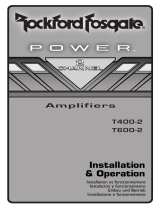 Rockford Fosgate T400-2 Manuale utente
Rockford Fosgate T400-2 Manuale utente
-
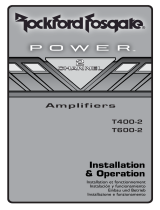 Rockford Fosgate T400-2 Manuale utente
Rockford Fosgate T400-2 Manuale utente
-
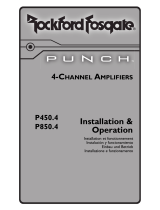 Rockford Fosgate Punch P450.4 Guida d'installazione
Rockford Fosgate Punch P450.4 Guida d'installazione
-
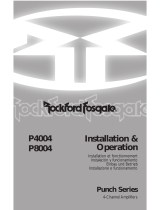 Rockford Fosgate Punch P4004 Istruzioni per l'uso
Rockford Fosgate Punch P4004 Istruzioni per l'uso
-
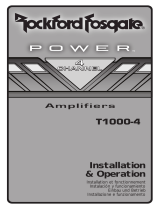 Rockford Fosgate T1000-4 Manuale utente
Rockford Fosgate T1000-4 Manuale utente
-
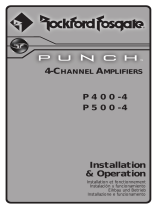 Rockford Fosgate P400-A Manuale del proprietario
Rockford Fosgate P400-A Manuale del proprietario
-
Rockford R1200-1D Manuale utente
-
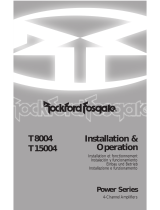 Rockford Fosgate T8004 Manuale del proprietario
Rockford Fosgate T8004 Manuale del proprietario
-
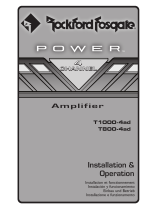 Rockford Fosgate T1000-4ad Installation & Operation Manual
Rockford Fosgate T1000-4ad Installation & Operation Manual
-
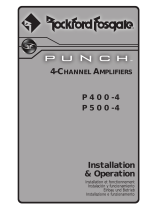 Rockford Fosgate Punch P4004 Istruzioni per l'uso
Rockford Fosgate Punch P4004 Istruzioni per l'uso








































































